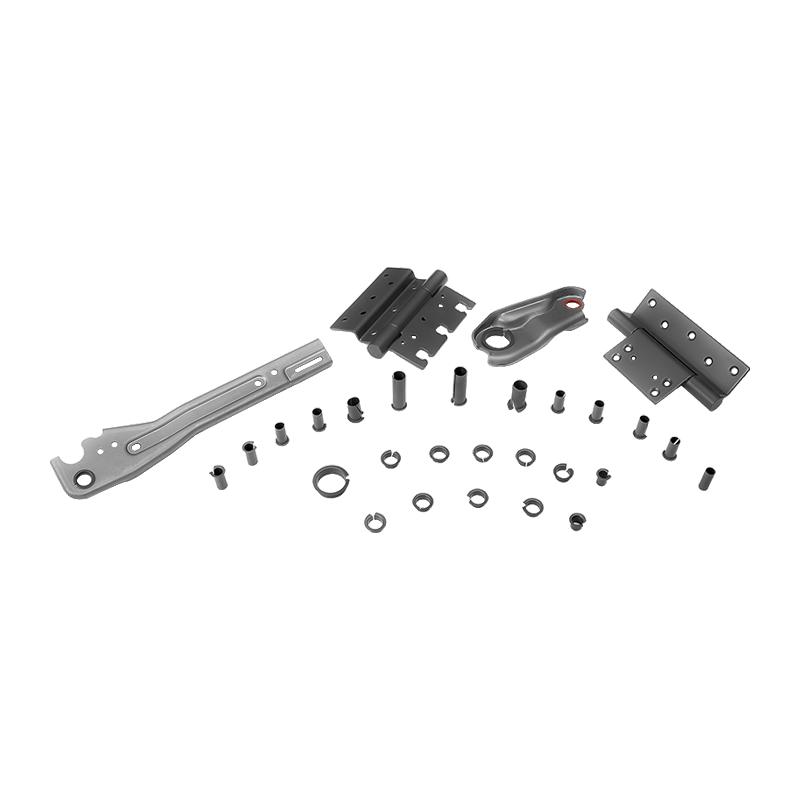PTFE (Polytetrafluoroethylene) bushings are widely used in industrial, automotive, and mechanical applications due to their low friction, chemical resistance, and self-lubricating properties. However, their performance under high load or high-speed conditions requires careful consideration because the material properties of PTFE differ significantly from metals or other engineering plastics.
1. High Load Applications
PTFE has excellent compressive strength relative to many plastics, but it is softer than metals, which influences its load-bearing capabilities:
-
Load Limits:
- Standard PTFE bushings can typically handle moderate loads, but under extremely high loads, PTFE may creep or deform over time, leading to reduced performance or clearance issues.
- To improve load capacity, reinforced PTFE bushings with fillers such as glass fibers, carbon fibers, or bronze are often used. These fillers enhance mechanical strength and reduce deformation under stress.
-
Stress Distribution:
- Proper design is crucial; bushings must be sized correctly to distribute the load evenly across the bearing surface.
- Thin or improperly supported PTFE bushings are more prone to deformation under heavy loads.
-
Temperature Considerations:
- High loads can generate frictional heat, and since PTFE’s mechanical strength decreases at elevated temperatures (above ~260°C), excessive load combined with high heat can accelerate creep or wear.

2. High-Speed Applications
PTFE’s extremely low coefficient of friction (≈0.05–0.10) makes it advantageous for high-speed applications:
-
Friction and Heat:
- Low friction reduces heat generation, which is beneficial for high-speed rotation.
- However, at very high speeds, even PTFE can experience surface wear if the load is also high, due to localized frictional heating.
-
Vibration and Stability:
- PTFE bushings can absorb some vibration, providing smoother operation at high speeds.
- Composite or filled PTFE bushings often perform better under high-speed conditions because fillers help maintain shape and reduce thermal expansion effects.
-
Lubrication Independence:
- PTFE is self-lubricating, which allows it to operate at high speeds without external lubrication.
- This property reduces maintenance requirements and the risk of lubricant-related issues, such as oil breakdown or contamination.
3. Design and Application Recommendations
To optimize PTFE bushings for high load or high-speed use:
Choose Reinforced PTFE: Glass-, carbon-, or bronze-filled PTFE significantly improves load-bearing capacity and dimensional stability.
Ensure Proper Fit: A precise bushing-to-shaft clearance minimizes movement that can lead to wear.
Consider Operating Conditions: Combine load, speed, temperature, and environmental factors when selecting the material.
Distribute Load Evenly: Use bushings with adequate surface area to reduce stress concentrations.
Use in Moderate High-Speed Applications: PTFE is excellent for moderate high-speed motion, but extremely high RPM applications may still require metal or hybrid solutions.
Summary
PTFE bushings are well-suited for high-speed applications due to their low friction and self-lubricating properties, reducing heat generation and wear. For high-load applications, standard PTFE may experience creep or deformation, so reinforced versions are recommended to maintain performance. Proper design, material selection, and consideration of operating conditions are key to ensuring PTFE bushings perform reliably under demanding conditions.



 English
English русский
русский Español
Español عربى
عربى


